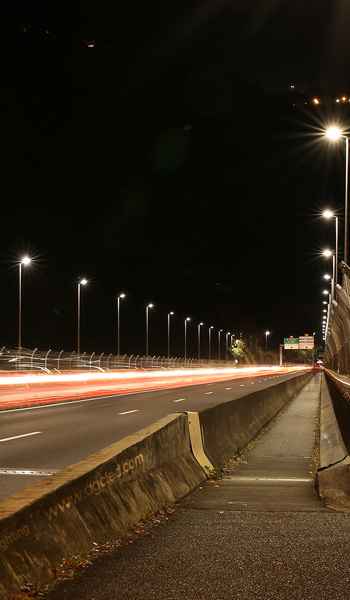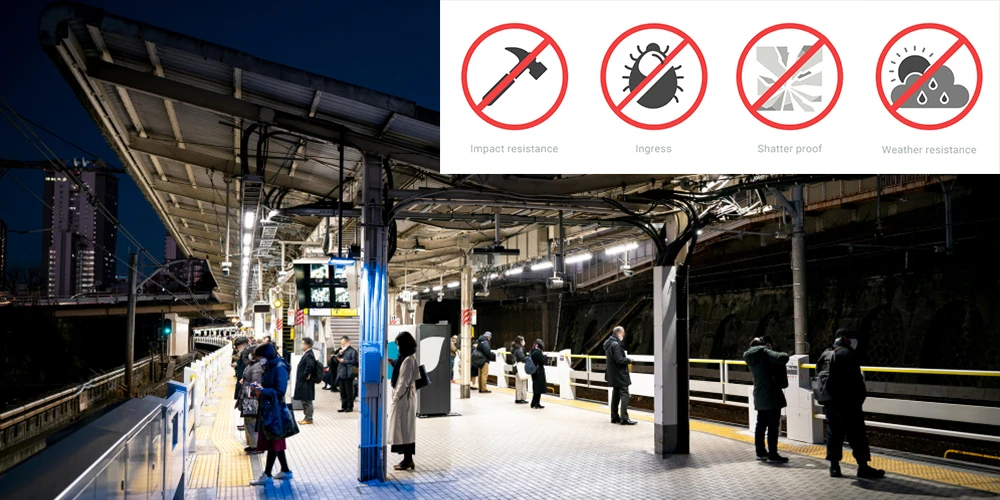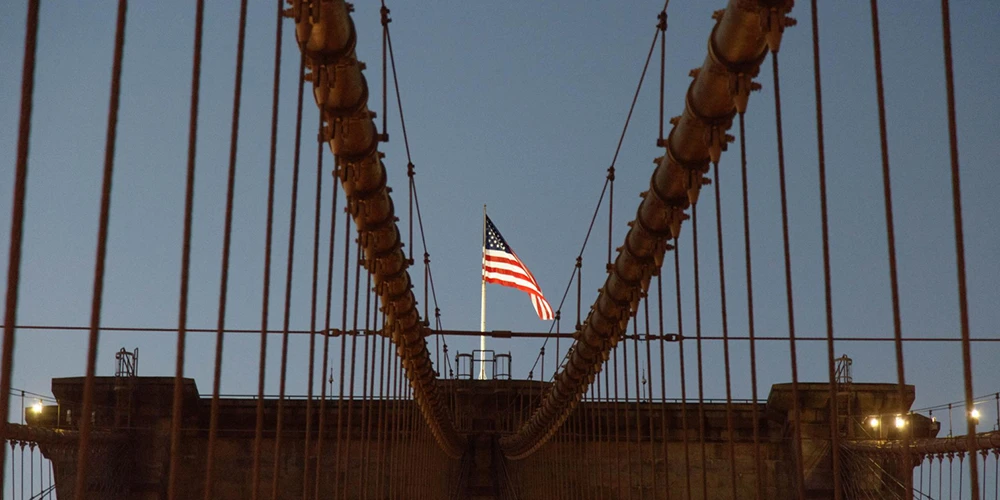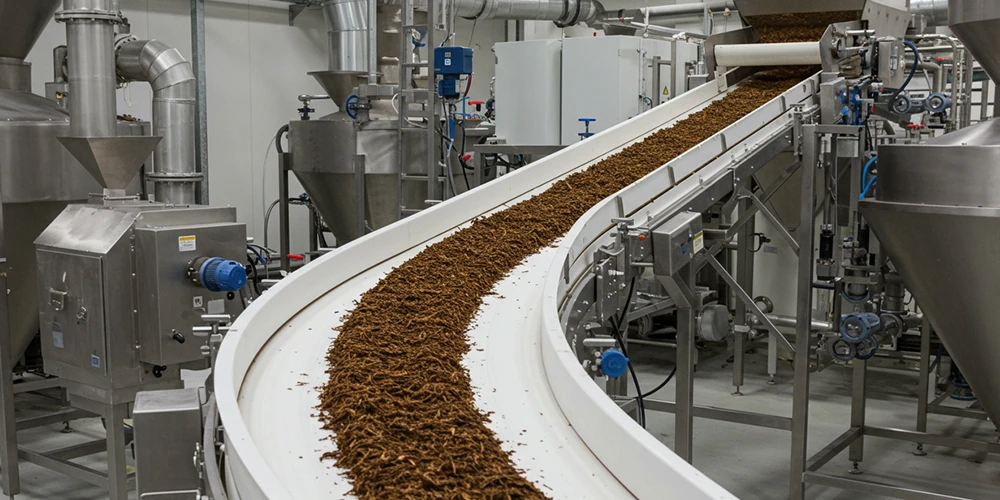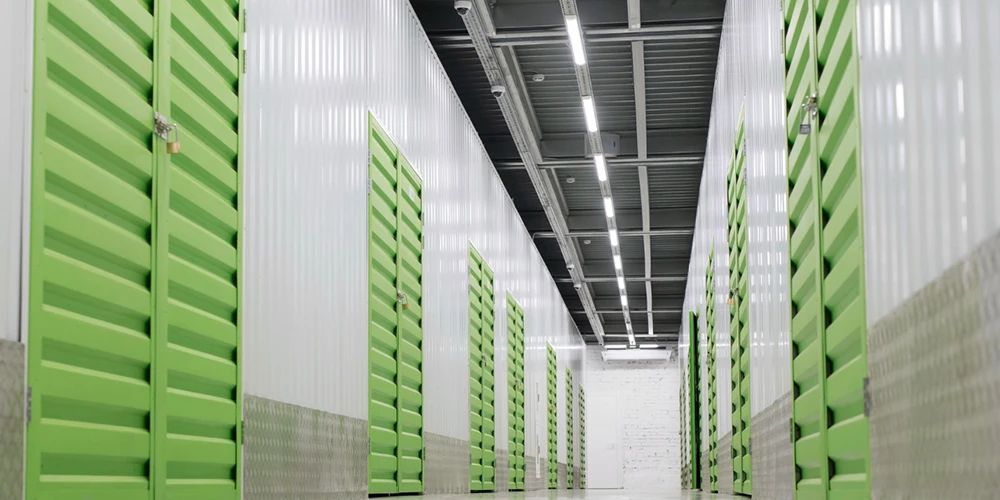Lighting plays a crucial role in both security and safety, but unfortunately, lighting fixtures are often vulnerable to damage, theft, and other criminal activities. In our last post, we talked about why vandals target public lighting and introduced vandal-resistant lighting as an effective solution. Today, we’ll explain what vandal-resistant lighting is and highlight the key features to consider when choosing the right option for your property.
What is vandal-resistant lighting?
Vandal-resistant lighting, also known as vandal-proof or anti-vandal lighting, refers to lighting fixtures built to resist physical damage, tampering, and intentional destruction. Unlike regular lights, which can be easily broken, these fixtures are made to be more durable, helping to prevent vandalism and keep your property lit. You’ll often find them in public areas like parks, underpasses, and transit stations, as well as in schools, bus stops, hospitals and industrial facilities.

Is vandal-resistant lighting the same as tamper-resistant lighting?
Although vandal-resistant lighting and tamper-resistant lighting are closely related and often combined in a single fixture, they are not the same. Vandal-resistant lighting is often, but not always, tamper-proof.
Vandal-resistant lighting is specifically built to withstand intentional physical damage. It’s designed for areas where fixtures may be at risk of being struck, hit, or broken on purpose. These lights use strong, durable materials and impact-resistant components to prevent the fixture from being damaged or disabled by force.
On the other hand, tamper-resistant lighting is intended to prevent unauthorized access or modification. The focus here is to stop individuals from opening the fixture, tampering with its parts, or interfering with the wiring. Tamper-resistant lights are equipped with specialized screws, sealed units, and other features that make it difficult for anyone without the right tools to tamper with the light.
Why you need vandal-resistant lighting
A search for “lighting fixture vandalism” shows that many cities and properties are dealing with the consequences of vandalized lighting systems.

While public streetlights are often the most affected, the issue extends to schools, hospitals, and industrial facilities as well. In these environments, high-risk individuals or even patients may damage lighting fixtures, leading to unsafe conditions. Investing in vandal-resistant lighting can help enhance safety, reduce long-term costs, and improve security in the areas that need it most.
Security and crime prevention
According to crime prevention expert Professor Ken Pease, better lighting deters potential offenders by making them more likely to be seen or identified. Vandal-resistant lighting provides consistent illumination, which helps reduce the risk of criminal activity and enhances security in public spaces.
Safety and accident prevention
Streetlight outages caused by vandalism are a major safety concern, as darkness increases the likelihood of accidents. Vandal-resistant lighting ensures that high-risk areas, such as stairways and pedestrian walkways, are properly illuminated, helping to keep people safe by preventing accidents in the dark.
Cost savings and reduced maintenance
According to the LA Bureau of Street Lighting, communities spend millions of dollars annually on repairs to fix vandalized lighting fixtures. While vandal-resistant lights may have a higher initial cost, they are built to last longer and require fewer replacements, reducing both labor and material costs. A study by the IDA (International Dark-Sky Association) also found that communities investing in durable lighting, including vandal-resistant options, saw a significant reduction in ongoing maintenance expenses over time.
Key features of vandal-resistant lighting
What makes vandal-resistant lighting so durable? It’s built to handle tough conditions and resist damage. When choosing these fixtures, look for a few key features that make them stand out. While not every vandal-resistant light will have all of these, but most vandal-resistant lights do.

Durable material
Durable materials are key to vandal-resistant lighting. Manufacturers often use tough metals like die-cast aluminum or strong polycarbonate. Die-cast aluminum is a favorite because it’s both lightweight and resistant to corrosion. Polycarbonate is another great option, known for its high impact resistance and UV stability.
Impact resistance
Vandal-resistant lights often come with something called "IK ratings," which tell you how well the fixture can handle physical impacts. The higher the IK rating, the more resistant the light is to damage. For the best protection, look for a rating like IK10, which offers the highest level of impact resistance.
Tamper-proof design
Many of these fixtures use specialized screws, like Torx or pin-in-Torx, that need special tools to remove. This makes it much harder for anyone to simply unscrew the lens or housing and mess with the internal parts. Plus, many vandal-resistant lights are built with sealed compartments that keep wiring and bulbs protected. This not only shields the internal components from damage but also makes it tougher to disable the light.
Shatter-proof lenses
Vandal-resistant lights are made with shatter-resistant polycarbonate or other tough plastics. These materials can absorb impacts and keep the light working, so you won’t have to deal with sudden darkness or the hassle of replacing broken lenses.
Weather resistance
Since vandal-resistant lighting is often used outdoors, it needs to handle the weather.
For outdoor use, look for higher IP ratings like IP65, IP66, or IP67 to ensure the light can handle rain, snow, and other conditions.
Things like salt spray and humidity can cause corrosion over time. That’s why many vandal-resistant lights are made with corrosion-resistant materials and finishes, helping them last longer and stay durable in all types of weather.

